Part 1 | Open Source Software: A Catalyst for Innovation and Collaboration
Open-source software has become a cornerstone of modern technological innovation. It represents a community-driven, collaborative approach to software development, where the source code is freely available for anyone to use, modify, and distribute. This model has empowered developers, startups, and large enterprises alike to build upon each other’s work, speeding up innovation and lowering the barriers to entry for anyone with an idea and a computer.
One of the key benefits of open-source software is its ability to democratize access to high-quality software solutions or key software components. From web development frameworks like WordPress and Django to complex operating systems like Linux, and frameworks like Symfony and Ruby on Rails (including the Ruby language), open-source platforms have enabled businesses and individuals to develop sophisticated applications without the heavy costs typically associated with proprietary software. These tools are also regularly updated and improved by vast networks of contributors, resulting in software that evolves and adapts rapidly to user needs.
Open source doesn’t stand in opposition to proprietary – or commercial – software. Rather, both models can and often do coexist to create a more dynamic technological landscape. Proprietary platforms provide a different type of value, offering polished, commercially supported solutions that may be essential for certain business needs. For example, Apple’s MacOS and iOS operating systems are proprietary, yet they are built on Darwin, an open-source Unix-based foundation. While Mac aficionados will remember MacOS' closed-source origins before moving to Darwin in the late 1990s, Apple now contributes significantly to the open-source community while also preserving certain layers of its software as proprietary to maintain control over user experience and security, a key element of its brand identity and value proposition to its customers and broader ecosystem.
Over the years, many companies moved into this kind of hybrid model, giving back to the open-source platforms they benefit from. For instance, Google has built its Android operating system on an open-source framework and has contributed heavily to the development of Kubernetes, an open-source container orchestration tool that has become the backbone of modern cloud infrastructure. By doing so, Google ensures Kubernetes’ continued growth and stability, while simultaneously strengthening its own cloud services built on the platform.
Similarly, Red Hat, a company built entirely on open-source Linux, has played a significant role in maintaining and advancing the Linux ecosystem. Through its Fedora project, Red Hat contributes to the broader Linux community while developing enterprise-grade products like Red Hat Enterprise Linux (RHEL). The result is a mutually beneficial relationship where open-source innovation fuels Red Hat’s business, and Red Hat’s contributions fuel the growth of Linux.
Smaller companies also contribute back. Nextcloud, a privacy-focused open-source cloud platform, built a successful business by offering proprietary support and services on top of their open-source platform. At the same time, they have maintained a strong community of contributors, regularly releasing updates and encouraging other developers to build plugins and enhancements for their system. This approach allows Nextcloud to thrive while giving back to the ecosystem they depend on.
Moreover, open-source and proprietary platforms thrive when they work together. Cloud service providers like Amazon Web Services (AWS), Microsoft Azure, and Google Cloud offer proprietary cloud platforms, yet they heavily rely on open-source technologies like Linux, Docker, and Kubernetes to power their infrastructure. This symbiosis allows these companies to provide powerful, scalable services to businesses of all sizes while contributing to the growth and sustainability of open-source ecosystems.
In this way, open-source software isn’t a competitor to proprietary solutions—it’s a complement. Both models provide different kinds of value, and when used together, they form a robust, innovative foundation that benefits developers, businesses, and the broader technology community.
Where Profiting from Open Source Software Happens and the Importance of Giving Back
Open-source software is often leveraged as a foundation for profitable businesses. Companies build entire ecosystems, platforms, and services on top of open-source frameworks, creating products that drive revenue and growth. While many of these companies succeed by using open-source technology, the long-term sustainability and innovation of these projects depend on the support and contributions from the very organizations that benefit.
Profiting from Open Source occurs when companies use open-source platforms to create commercial services, whether by packaging, extending, or hosting these tools. Open-source licenses allow this, encouraging widespread adoption and innovation. However, the health of these projects relies on a reciprocal relationship where companies give back, ensuring that the core software remains robust, secure, and evolving.
In this way, open-source software isn’t a competitor to proprietary solutions—it’s a complement. Both models provide different kinds of value, and when used together, they form a robust, innovative foundation that benefits developers, businesses, and the broader technology community.
Examples of Companies Profiting from Open Source
Symfony: Symfony is a popular open-source PHP framework that powers thousands of web applications globally. Many companies, including digital agencies and large enterprises, profit by using Symfony as the foundation for their custom web development projects. SensioLabs, the company behind Symfony, profits from the framework through premium services, such as training, consulting, and certifications. However, they also give back by actively maintaining and developing Symfony, offering support to the community, and fostering innovation. Numerous companies that build off Symfony also contribute code, plugins, and documentation, ensuring the framework evolves to meet the needs of modern web development.
Java: Java is another prominent example of a thriving open-source platform with countless businesses profiting from its use. Developed by Sun Microsystems (later acquired by Oracle), Java has become one of the most widely used programming languages for enterprise applications, particularly in industries like finance and telecommunications. Many companies build proprietary solutions on top of Java, leveraging its open-source core. Oracle profits from Java through its enterprise offerings and services like Oracle JDK, yet they also contribute by maintaining the OpenJDK project, which provides the open-source reference implementation of the Java platform. Other companies, such as IBM and Red Hat, also contribute heavily to Java's ecosystem by sponsoring development, contributing to the JVM (Java Virtual Machine), and creating enterprise-grade tools and frameworks that support the language.
WP Engine and WordPress: One of the clearest examples of a company that has built significant profit from open-source software is WP Engine, which provides premium hosting services for WordPress, the world’s most popular content management system (CMS). WordPress itself is open-source, allowing anyone to use and modify it. WP Engine has grown into a multi-million dollar business by offering services like enhanced performance, security, and customer support for WordPress users. While WP Engine profits from hosting WordPress, the ongoing sustainability of WordPress as a platform relies on contributions from companies and developers to maintain its codebase, security, and features.
Amazon and ElasticSearch: Another key example is Amazon Web Services (AWS). AWS offers ElasticSearch as a service (Amazon OpenSearch Service), enabling companies to use the search and analytics tool with the scalability and reliability of the AWS infrastructure. ElasticSearch, originally an open-source project, has been a core piece of software in many companies’ tech stacks. However, disputes arose when Elastic, the company behind ElasticSearch, accused Amazon of benefiting from the software without contributing back in a way that matched its significant profits from hosting ElasticSearch.
In these examples, businesses that have profited significantly from open-source projects have sparked discussions about the importance of giving back to the communities that maintain these tools. Without contributions—whether financial, in code, or in infrastructure support—the open-source platforms that these businesses rely on could stagnate, weakening the very foundation of their services.
The Importance of Reciprocal Relationships
To ensure the health and evolution of open-source projects, companies need to contribute back to the communities they profit from. This creates a virtuous cycle where open-source platforms become more secure, efficient, and innovative, benefiting everyone involved.
Giving back can take many forms:
Code Contributions: Companies can allocate developer time to contribute to the core code of the open-source project. These contributions might involve fixing bugs, adding new features, or improving security.
Sponsorship and Financial Support: Companies can sponsor the developers or organizations behind the open-source project, helping fund its development. This is especially important for smaller open-source projects where the community may lack the financial resources to sustain long-term growth.
Community Engagement: Actively participating in open-source communities by attending or sponsoring conferences, helping moderate discussions, or contributing to educational resources can also support the growth and sustainability of a project.
Successful Give-Back Examples
Red Hat and Linux: Red Hat’s business model revolves entirely around Linux, the open-source operating system. Red Hat has been one of the most prominent contributors to the Linux kernel, ensuring the project remains innovative and secure while building profitable services around it. In doing so, Red Hat has helped ensure the long-term success of Linux, which also benefits their enterprise customers.
Google and Kubernetes: Google has been instrumental in the development and popularization of Kubernetes, an open-source container orchestration system. While Google profits from offering Kubernetes as part of its cloud platform, it continues to contribute heavily to the Kubernetes community, adding new features and ensuring its long-term viability. By doing so, Google helps maintain an ecosystem that directly benefits its own business while supporting innovation for thousands of other companies.
The rise of open-source collaboration was made possible by the internet, creating a novel, shared model of development that transcends geographic and organizational boundaries. This internet-centric capability has allowed developers from all over the world to work together in real time, building tools and technologies that now play an essential role in our daily lives – it wasn't perfect at first and needed time to improve quality control, but has become a solid model. Today, open-source technology is embedded in countless devices and applications—our TVs, smartphones, computers, thermostats, and even kitchen appliances. Yet, for most people, the extent to which open-source innovations power their modern conveniences often goes unnoticed, despite being a critical component in enabling and enriching the technology we rely on every day.
There are many examples demonstrating the value of creating a mutually beneficial relationship between companies and open-source platforms. By contributing back, businesses not only ensure the sustainability of the software they depend on but also enhance their own products and services through community-driven innovation. In Part 2, we'll explore the challenges of balancing this relationship, ensuring both the community and company's interests both advance to everyone's benefit.


























